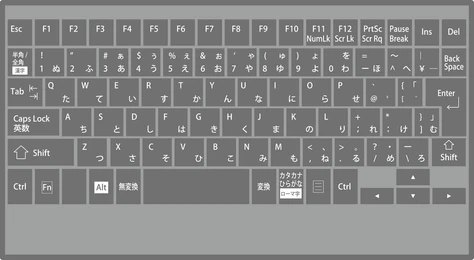The advanced console is more than just a board of keys; it’s a portal to computerized proficiency. Among its numerous covered-up jewels lies a feature that frequently goes unnoticed, however, holds the potential to reshape how we work, amusement, and are associated with our gadgets: the Console Fn Lock.
Whether you’re an understudy, a farther specialist, a gamer, or a designer, chances are you’ve come across the secretive Fn key—but what about the Fn Bolt? Keyboard Fn Lock Technology.
Let’s plunge profound into this unpretentious powerhouse and investigate how opening it can spare time, diminish disappointment, and streamline your workflow.
What Is the Keyboard Fn Lock?
To get the Fn Bolt, we to begin with require to unload the Fn key. Brief for Work, the Fn key is commonly found on portable workstations and compact consoles.
It acts as a modifier, comparable to Move or Ctrl, empowering auxiliary capacities on keys that have different uses.
These auxiliary capacities frequently include:
- Volume controls
- Screen brightness
- Media playback (Play, Stop, Skip)
- Keyboard backlighting
- Wireless flip (Wi-Fi, Bluetooth)
- External screen switching
While these are verifiably valuable, squeezing Fn + [Work key] each time can get to be tedious, especially if you utilize them frequently.
Enter Fn Lock.
The Fn Bolt is an extension that permits you to flip the default behavior of the Work keys. When it’s empowered, the best push of keys carries on like standard work keys (F1–F12), without requiring holding down Fn. When it’s impaired, those keys perform their auxiliary activities by default.
It’s like Caps Bolt but for your work row.
Why the Fn Lock Matters
1. Improved Workflow for Professionals
Imagine you’re a realistic originator altering brightness and differentiating over and over, or an engineer flipping between code windows and investigating instruments that depend on F5 or F12.
If you continually have to press Fn + F5, it moderates you down—tiny delays that compound over time.
Fn Bolt disposes of that friction.
It gives you control over how your console carries on based on your everyday propensities. Whether you require the conventional work keys more regularly or incline toward the media controls, setting the console once and overlooking it makes a genuine impact.
2. Simplifies Gaming and Creative Work
Gamers regularly depend on keyboard shortcuts for speedy activities, large-scale commands, or in-game tools. Having to utilize the Fn key amid gameplay is distant from perfect. The Fn Bolt guarantees you can hit F1 through F12 directly—without additional keystrokes.
Similarly, in video-altering computer program or 3D modeling instruments, work keys are regularly mapped for quick workflows. With Fn Bolt, creatives can dodge inadvertent brightness changes or media intrusions mid-project.
3. Customize the Experience Based on User Behavior
The console Fn Bolt doesn’t make things faster—it makes the console yours. You can personalize your interaction style:
- Are you a spreadsheet wizard who needs F2 to alter cells fast?
- An artist continually delaying tracks?
- An author who needs peace and calm without coincidental volume changes?
Whatever your part, Fn Bolt adjusts to you, not the other way around.
How to Enable or Disable Fn Lock
Activating Fn Bolt isn’t universal—it shifts based on the brand and demonstration of your console. But once you know the strategy, it gets to be moment nature.
Here are the most common ways to flip Fn Lock:
1. Using the Fn + Esc Shortcut
On numerous tablets, particularly from HP, Lenovo, and Dell, squeezing Fn + Esc empowers or debilitates Fn Bolt. You might indeed see a little lock image on the Esc key to show its double role.
Once active:
- Pressing F1 straightforwardly triggers F1, not the brightness, or offersan assistance function.
- Holding Fn + F1 returns incidentally to the auxiliary function.
2. BIOS or UEFI Settings
Some systems, particularly business-grade laptops, offer a way to permanently set Fn Lock from the BIOS or UEFI firmware. To do this:
- Restart your computer.
- Enter BIOS/UEFI setup (usually by pressing F2, Delete, or Esc at startup).
- Look for an option like “Action Keys Mode”, “Function Key Behavior”, or “Hotkey Mode”.
- Switch between Function Mode (F1–F12 as primary) and Hotkey Mode (media keys as primary).
- Save and exit.
This strategy is perfect if you need a reliable setting over sessions.
3. Manufacturer Software
Brands like ASUS, MSI, and Lenovo regularly give committed control panels—Lenovo Vantage, ASUS Arsenal Carton, Dell Quickset, etc.—that incorporate Fn Bolt toggles.
This software-based strategy gives you extra adaptability, particularly if you as often as possible switch between workflows.
Fn Lock Across Different Keyboard Layouts

The behavior and area of Fn Bolt can vary:
MacBooks: Apple employments the Fn key basically for flipping keyboard input and other uncommon capacities, but more recent Mac models permit you to customize the function key behavior in System Preferences.
Gaming Keyboards: Brands like Corsair, Razer, and Logitech regularly let you remap keys—including Fn Lock—via their program suites.
Compact or 60% Keyboards: These ultra-portable consoles make overwhelming utilize of Fn layers. Fn Bolt can be priceless in lessening complexity.
Common Use Cases Where Fn Lock Shines
Let’s look at a few scenarios to see how the console Fn Bolt changes regular tasks:
Case 1: The Excel Enthusiast
You work in the fund and always utilize F2 to alter cells. Without Fn Bolt, each alter requires two keys. That’s hundreds of keystrokes a day. By empowering Fn Bolt, F2 gets to be a one-tap command. Duplicate that by weeks or months, and the time spared gets to be significant.
Case 2: The Music Producer
You’re tweaking tracks in FL Studio and utilizing F9 through F12 to bring up diverse sees. Without Fn Bolt, those keys alter your laptop’s brightness or volume instep. With Fn Bolt-on, your workspace remains uninterrupted.
Case 3: The Remote Worker
You’re on Zoom calls all day. F6 flips quiet, and F11 goes full screen. But your tablet employs those keys to open browser windows or lower the brightness unless Fn is held. That can be unbalanced in the center of an introduction. Empowering Fn Bolt smooths your interaction with software
Fn Lock vs Sticky Keys vs Modifier Remapping
It’s critical not to confound Fn Bolt with other console highlights like Sticky Keys or Modifier Remapping.
- Feature
- Purpose
- Example Use
- Fn Lock
- Toggles function/media keys
- Fn + Esc to prioritize F1–F12
- Sticky Keys
- Lets you press modifiers (Move, Ctrl) one at a time
- Accessibility feature
- Modifier Remapping
- Reassigns one key’s work to another
- Make Caps Bolt carry on as Ctrl
Each instrument has a distinctive reason, but when utilized together, they can profoundly personalize your console experience.
The Hidden Cost of Not Using Fn Lock
- Let’s flip the script: what happens if you don’t utilize Fn Lock?
- You squander micro-moments holding down Fn repeatedly.
- You chance interruptions—like inadvertently quieting your sound amid a call.
You make muscle memory strife, particularly if you utilize numerous consoles with distinctive behaviors.
While it may appear minor, disregarding the alternative to customize your console can gradually dissolve effectiveness over time.
Tips to Get the Most from Fn Lock
To coordinate Fn Bolt into your workflow:
- Audit Your Key Usage: Track which top-row capacities you utilize most. Is it F keys or media shortcuts?
- Set It and Forget It: Utilize BIOS or seller instruments for a determined setting over reboots.
- Use Visual Reminders: A few consoles have Driven markers for Fn Bolt. Others don’t—consider utilizing a sticky note or computerized update until it gets to be habit.
- Pair with Custom Shortcuts: Instruments like AutoHotKey (Windows) or Karabiner-Elements (Mac) can improve what Fn Bolt starts.
- Switch Based on Context: A few clients flip Fn Bolt all through the day—media mode amid breaks, work mode amid work. Learn to flip it quickly.
Final Thoughts: Small Change, Big Impact
In a world fixated on complex efficiency hacks, the console Fn Bolt stands out as a humble, neglected change with gigantic upside.
It doesn’t require a modern program, memberships, or hours of setup. It’s a built-in feature—often fair a two-key press away—that can recover center and effectiveness in your day.
If your console has been beating you down in unpretentious ways, deliver Fn Bolt and try. You might fair open a smoother, more natural relationship with your computerized tools.
Key Takeaways
- Fn Bolt flips whether the beat push of keys acts as F1–F12 or media keys.
- It’s perfect for experts, gamers, makers, and control users.
- It can be flipped by means of Fn + Esc, BIOS settings, or merchant software.
- Using the Fn Bolt streamlines workflows, decreases diversions, and makes strides in ergonomics.
- It’s one of the least demanding ways to overhaul your everyday efficiency, without buying anything new.
FAQS
1. What is Console Fn Lock?
Fn Bolt is a console that permits clients to switch the default behavior of the work keys (F1–F12) between their standard activities and interchange media capacities like volume control or screen brightness.
2. How do I empower or cripple Fn Bolt on my keyboard?
You can, as a rule, flip Fn Bolt by pressing Fn + Esc; on a few frameworks, you may need to alter it through BIOS/UEFI settings or utilize a manufacturer-specific program like Lenovo Vantage or ASUS Arsenal Crate.
3. How does Fn Bolt make strides in productivity?
Fn Bolt diminishes the requirement to press the Fn key more than once, permitting speedier get to the commands you utilize most, especially accommodating for experts, gamers, and creatives who depend intensely on alternate route keys.
4. Is Fn Bolt accessible on all keyboards?
No, Fn Bolt is basically found on tablets and compact consoles; bolster changes by brand and show, and a few desktop consoles may not incorporate it at all.


